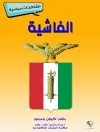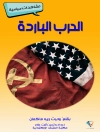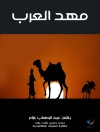In ‘The Story of Mankind, ‘ Hendrik Willem van Loon weaves a captivating narrative that chronicles the evolution of human civilization from its earliest beginnings to the 20th century. Employing an accessible and engaging prose style, this seminal work breaks down complex historical themes into vivid stories, making history relatable to a broad audience. Van Loon’s illustrative approach combines humor and insight, reflecting on cultural, political, and social developments with an optimistic yet critical lens, inviting readers to reflect on humanity’s journey through triumphs and tribulations. Hendrik Willem van Loon, a Dutch-American historian, author, and illustrator, was deeply influenced by his diverse educational background and personal experiences, including his travels across continents. His passion for storytelling and his belief in the importance of understanding history as a collective human adventure fueled the creation of this book. Van Loon sought to foster a sense of global perspective and unity, aiming to inspire readers to learn from the past in order to navigate the future more effectively. I highly recommend ‘The Story of Mankind’ to anyone interested in a comprehensive yet engaging overview of human history. Van Loon’s ability to blend facts with narrative flair not only educates but also instills a sense of wonder about the human experience. This book is an exemplary gateway for both novices and history enthusiasts alike, encouraging a deeper appreciation of our shared heritage.
Circa l’autore
Hendrik Willem van Loon (1882-1944) was a distinguished Dutch-American historian, journalist, and award-winning author, celebrated for making complex historical and scientific topics accessible to younger audiences. An erudite raconteur, van Loon achieved great fame with his book ‘The Story of Mankind’ (1921). This pioneering work earned him the first-ever Newbery Medal in 1922, recognizing outstanding contributions to children’s literature. Van Loon’s approach interwove a narrative style with engaging prose to recount human history, setting a precedent for infotainment in educational writing. A man of myriad talents, van Loon was also a proficient illustrator, and his texts frequently featured his own whimsical drawings to complement his written word. His literary style, characterized by a personal and conversational tone, helped endear his comprehensive historical accounts to both juvenile and adult audiences. Aside from ‘The Story of Mankind, ‘ van Loon penned numerous other works, such as ‘The arts’ (1937), which similarly aimed to democratize the understanding of human creativity and cultural achievements for general readers. His commitment to education was not only evident in his writing but also in his career as a professor and lecturer. Van Loon’s legacy endures as a pioneering figure in the genre of narrative nonfiction for youth, leaving an indelible mark on historical and educational literature.












